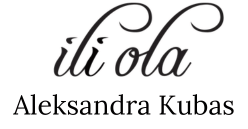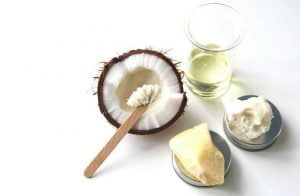Now, I would like to talk to you a little about flavonoids – the compounds appearing in vegetables, fruits and herbs.
Flavonoids are brilliant-minded chemical compounds that give us everything we basically need: health, longevity, and cool look. ?
Flavonoids: What do you know already?
The Wikipedia tells us that flavonoids (also referred to as bioflavonoids, flavonoid compounds) are “a group of organic chemical compounds contained in plants and acting as colorants, antioxidants, natural insecticides and fungicides, protecting against attacks from insects and fungi. Most of them are colorants amassed in surface layers of vegetal tissues, giving the plant intense colour and restricting the noxious influence of ultraviolet radiation”.
Let us explain it, step by step:
Flavonoids are natural, biologically active chemical substances that are widespread in the vegetal world. Owing to their multiple biological characteristics, flavonoids form the most interesting group among polyphenols. It is to them that plants owe their characteristic smell, taste, and colour. The most typical colours are yellow and orange (produced by flavones and flavonols), blue-violet (anthocyanins), less frequently colourless or cream-white (catechins). Flavonoids determine the colours of flowers, fruits and leaves. More than 8,000 flavonoids have been discovered so far, with only 200 researched.
What use do we make of them?
In the human organism, flavonoids can have a role similar to that of vitamins. Their number-one quality is their proven efficiency as antioxidants, retarding the aging processes and bringing about beneficial health effects. A number of beneficial actions offered by flavonoids are based precisely on their antioxidant qualities and their ability to modify enzymes—particularly those responsible for immunological functions, cancerogenesis, and cellular transformations.
The antioxidant actions of flavonoids consists in:
inhibiting the activity of enzymes contributing to the generation of free radicals;
chelating the ions of transition metals participating in the origination of the free-radical reaction chain (click HERE to read more about free radicals);
reducing reactive forms of oxygen (RFO), including free radicals, to more stable and non-active connections;
inhibiting the ascorbic oxidase, thus preventing the oxidation of vitamin C and extending its action in the organism (routine).
On top of all this, flavonoids display anti-inflammatory (by inhibiting the secretion of histamine), anti-allergic, painkilling, and anti-swelling activities.
A flavonoid-rich diet and use of cosmetics containing these compounds has a very positive impact on preservation and keeping up a youthful appearance of the skin. Products comprising flavonoid compounds improve your skin’s moisture level, smoothen the skin and have a beneficial effect on biosythesis of collagen. Moreover, they prevent wrinkles and have a screening and tightening effect—and they protect your skin against the adverse effects of UV radiation (both UVA and UVB). Flavonoid compounds are mainly used in wrinkle-busters (anti-aging and nutritive cosmetics—in order to diminish the negative effects of sunbathing and photo-aging) and anti-acne products (fighting common/simple acne as well as acne rosacea).
The recommended consumption dose is approx. 1 to 2 g of flavonoids per day.
How much is this in fruit/vegetable amount terms?…. It’s about 3 kg. ?
A much more efficient influence of favonoid complexes contained in plants has been observed, compared to single synthetic or individualised substances. Hence, eating raw fruit and vegetables as well as consuming natural supplements (for their array of active ingredients and high bioavailability) is more justifiable than use of individual isolated flavonoids. Synergy is at work here, in that substances and other elements mutually collaborate and reciprocally intensify their action and effect.
The most reliable sources of flavonoids are:
dark-coloured fruits: red grapes, blackberries, pomegranates, chokeberries, blackcurrants, sour cherries, blueberries;
citrus fruits: oranges, grapefruits;
other fruits: wild rose (rosehips), sea buckthorn, haws;
vegetables: red beet, red cabbage, onion, garlic, broccoli, tomatoes, peppers, lettuce;
green coffee beans.
Flavonoid materials used in cosmetology include (among others):
yarrow (cosmetics regenerating oily skins with enlarged pores);
European white birch/silver birch (wrinkle-busters, anti-acne, anti-eczema)
small-leaved linden/lime (care/aftercare cosmetics for sensitive skins, hydrating/moisturising)
helichrysum inflorescence
Mediterranean milk thistle fruit
horsetail herb (eye cosmetics, wrinkle-busters, shampoos)
wild pansy/heartsease herb (anti-acne, anti-seborrhea)
In summary, flavonoids are substances whose use will enable you to longer preserve a nice and young skin, support your immunological system and nervous system, and minimise the discomfort accompanying skin allergies.
Eating about three kilograms of diverse vegetables and fruit a day, you can be reassured that you have provided your organism with sufficient quantities of flavonoid compounds. Raw fruit and vegetables is a definitely better solution than supplements. And, the very next time you ponder what wine to choose—a red or a white one, do have a go for the former! ?




